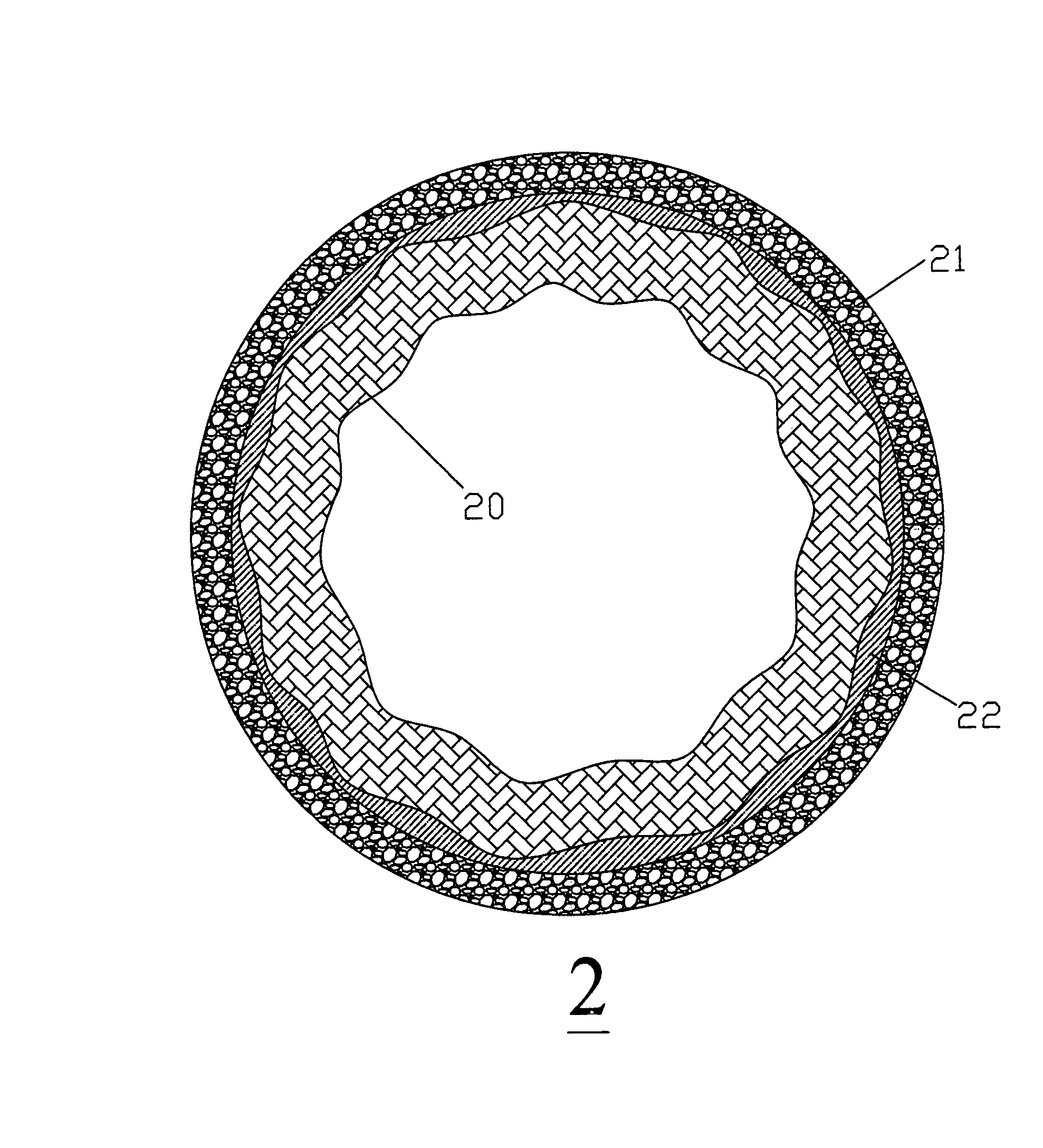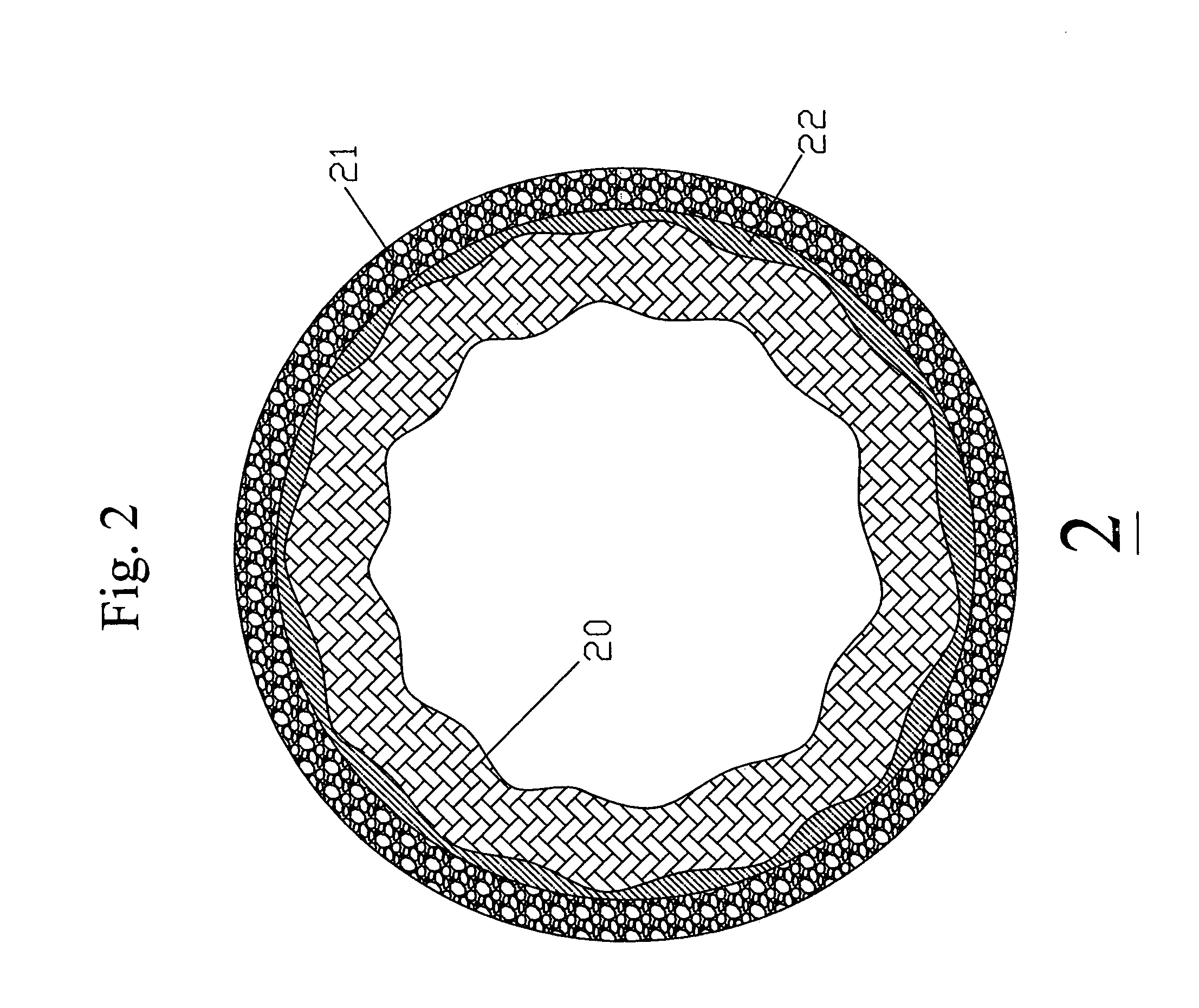Method for producing defect free composite membranes
a composite membrane, defect-free technology, applied in the field of semi-permeable membranes, can solve the problems of weaker membrane, thinner membrane, and inability to resist chlorine attack, and achieve the effect of speeding up the phase inversion process
- Summary
- Abstract
- Description
- Claims
- Application Information
AI Technical Summary
Benefits of technology
Problems solved by technology
Method used
Image
Examples
example 1
Effect of Multiple Coatings on Membrane Performance
[0062]All of the chemicals used were purchased from Aldrich Chemicals Inc., Milwaukee, Wis. 53201.
[0063]A membrane casting solution (referred to herein as Dope I) was prepared by dissolving 13 parts by weight of poly(vinylidene fluoride) (PVDF), 5 parts by weight of polyvinylpyrrolidone (PVP), 5 parts by weight of aluminum chloride hexahydrate (AlCl3.6H2O), and 2 parts by weight of poly(vinyl butyral-co-vinyl alcohol-vinyl acetate) in 75 parts by weight of 1-methyl-2-pyrrolidinone (NMP) as a solvent.
[0064]A composite hollow fiber membrane was prepared by coating a tubular braid with the above dope using a spinneret shown in FIG. 1 and a process depicted in FIG. 3. Ultrasonic sonication was applied to the coagulation bath to speed up phase inversion process. The braid was coated at a speed of 60 ft / min, coagulated and leached at 50–55° C. in water to give a composite hollow fiber membrane, which was collected by a take-up wheel immer...
example 2
Effect of an Adhesive Coating Layer on Membrane Performance
[0067]In example 2, a braid was first coated with a proprietary adhesive, then coated with Dope I obtained from Example 1 using a spinneret displayed in FIG. 1 and a process depicted in FIG. 3 to give a composite hollow fiber membrane. The membrane was heated in an oven at 80° C. for 8 hours before use. The condition used to make the membrane and membrane characteristics are given in Table 2.
[0068]
TABLE 2COMPOSITION OF MEMBRANE CASTING SOLUTION (DOPE I)Poly(vinylidene fluoride) (PVDF)13%Polyvinylpyrrolidone (PVP) 5%Aluminum chloride hexahydrate 5%(AlCl3.6H2O)Poly(vinyl butyral-co-vinyl 2%alcohol-vinyl acetate)1-Methyl-2-pyrrolidinone (NMP)75%COATING CONDITIONDope Pressure100 psi1st coatingAdhesive2ed coatingDope ICoagulation bathWater, 50–55° C.Primary leaching bathWater, 50–55° C.Secondary leaching bathWater, ambient temperatureCoating speed60 ft / minMEMBRANE CHARACTERISTICSBraid outside diameter 63 milMembrane outside diame...
example 3
Effect of Adhesive Reinforcement on Membrane Performance
[0069]The composite hollow fiber membrane obtained from Example 1 was first filled with a proprietary adhesive formulated for strengthening the binding between the support and the membrane, then drained to remove the excess amount of adhesive from the membrane. The membrane was heated in an oven at 80° C. for 8 hours before use. The membrane obtained has the following characteristics as shown in Table 3.
[0070]
TABLE 3MEMBRANE CHARACTERISTICSBraid outside diameter63 milMembrane outside diameter78 milBurst pressure>100 psiWater permeability20 gfd / psiMilk permeability1.2 gfd / psi, permeate clearPOST TREATMENT WITH 10,000 PPM NaOClAT AMBIENT TEMPERATURE FOR 48 HOURSWater permeability55 gfd / psiCanobie Lake water permeability22 gfd / psi,permeate clear and potableSewage water permeability12 gfd / psi, permeate clear anddischargeable
PUM
| Property | Measurement | Unit |
|---|---|---|
| speed | aaaaa | aaaaa |
| speed | aaaaa | aaaaa |
| pressure | aaaaa | aaaaa |
Abstract
Description
Claims
Application Information
 Login to View More
Login to View More - R&D
- Intellectual Property
- Life Sciences
- Materials
- Tech Scout
- Unparalleled Data Quality
- Higher Quality Content
- 60% Fewer Hallucinations
Browse by: Latest US Patents, China's latest patents, Technical Efficacy Thesaurus, Application Domain, Technology Topic, Popular Technical Reports.
© 2025 PatSnap. All rights reserved.Legal|Privacy policy|Modern Slavery Act Transparency Statement|Sitemap|About US| Contact US: help@patsnap.com



